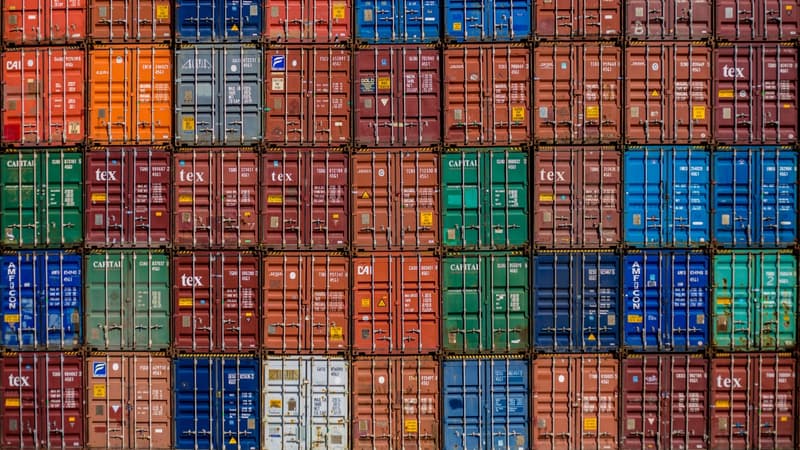Ten. This is the number of “sanctions packages” decided and applied by the European Union against Russia since its invasion of Ukraine in February 2022. However, it must be recognized that the Russian economy is resisting. It is estimated that in 2022, Russia’s GDP fell by only 2.1%.
At the center of these sanctions are restrictive measures (including bans) that aim to export certain European products to Russia. “The list of prohibited products is drawn up in such a way as to maximize the negative effects of the sanctions on the Russian economy,” underlines the European Council.
More than 40,000 million euros of European products prohibited from exporting to Russia
Specifically, since February 2022, the EU has banned more than 43.9 billion euros of goods exported to Russia, enough to drastically dry up Russian imports from Europe. But in reality, Russia would manage to import these goods indirectly quite easily.
These exports increased “23% to Turkey, 345% to Kyrgyzstan, 165% to Armenia, 130% to Uzbekistan, 94% to Kazakhstan or 58% to Georgia.”
In value terms, the increase in EU exports of goods “was €20.5 billion to Turkey, €4.9 billion to Kazakhstan, €1.5 billion to Uzbekistan, €1.2 billion to Georgia, €1.1 billion to Armenia, €909 million to Kyrgyzstan.”
Moscow’s allies re-export to Russia
And it will not have escaped anyone: these countries are geographically close to Russia but are also its allies.
“Similarly, companies from China and Hong Kong, as well as from the United Arab Emirates, are also suspected of re-exporting certain categories of goods purchased from the European Union to Russia,” it continues.
There is little room for doubt. Just look at the export figures from these same countries to Russia. “Exports, expressed in euros, have increased, for example, between 2021 and 2022 by 82% for Turkey, 222% for Armenia, 12% for Georgia.”
An ever stronger compensation
And although the European executive has just presented to the member states an eleventh set of restrictive measures against Moscow, “this situation has intensified even more in 2023,” says Eric Dor.
“During the months of January and February 2023, compared to the same period of the previous year, the European Union’s merchandise exports have again halved to Russia, but their annual growth is estimated at 30% to Turkey, 741% to Kyrgyzstan, 473% to Kazakhstan, 222% to Armenia or 34% to Georgia”, he explains.
With the same effects. “The suspicion of a partial re-export to Russia is strong. Exports to Russia, expressed in euros, increased between the first quarters of 2022 and 2023 by 180% for Turkey, 369% for Armenia, 68% for Georgia.”
French exports soar to Kazakhstan, Kyrgyzstan…
France is no exception to this particular circuit. If “between 2021 and 2022, exports of goods from France to Russia decreased by 3.3 billion euros, or 51.91%, during the same period exports of goods from France increased by 25% to Turkey, 84% to Kazakhstan, 62% to Armenia, and 45% to Kyrgyzstan”, highlights the director of economic studies at the IESEG School of Management of the Catholic University of Lille.
And these exports refer to goods that may have a military use, such as integrated electronic circuits. With the same scheme described above.
“Between 2021 and 2022, exports of electronic integrated circuits from the European Union, measured in euros, fell by 81% to Russia, but increased by 3,461% to Kyrgyzstan, 1,313% to Armenia, 221% to Uzbekistan, 173% % to Georgia, 193% to Kazakhstan”, details the economist.
And in January and February 2023, compared to the same period of the previous year, these same EU exports of electronic integrated circuits “decreased 99.99% to Russia, but increased 81% to Turkey, 3685% to Kazakhstan , or 503% to Armenia,” he continues.
Washing machines disassembled to repair cisterns
It is not all. We discussed it in BFM Business and the scenario is confirmed: other products such as European household appliances are also curiously and massively imported by countries close to Moscow. However, these goods contain integrated circuits that can be disassembled and used in products for military purposes.
“Between 2021 and 2022, exports of household washing machines from the European Union, measured in euros, fell 49% to Russia, but increased 1,139% to Turkey, 49.3% to the United Arab Emirates, 615% to Uzbekistan , 416.2% to Armenia, 301% to Georgia, 139% to Kazakhstan,” explains Eric Dor.
Machines rushed back to Russia whose parts would be used to repair… main battle tanks.
Source: BFM TV


